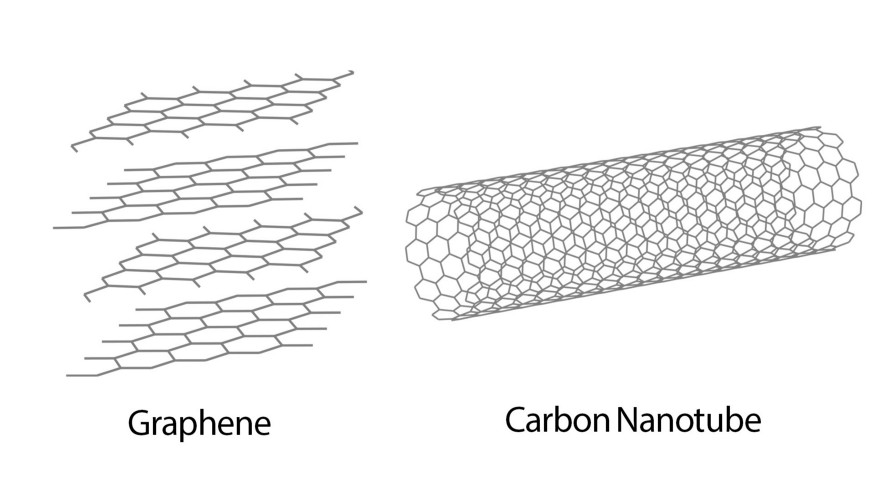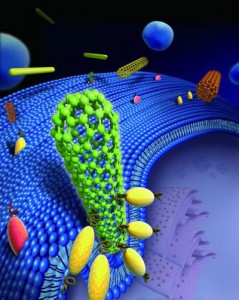Since COVID-19, we’ve been advised to wear face masks. It seems some of them may not be as safe as we assumed. First, the Health Canada advisory that was issued today, April 2, 2021 and then excerpts from an in-depth posting by Dr. Andrew Maynard (associate dean in the Arizona State University College of Global Futures) about the advisory and the use of graphene in masks.
From the Health Canada Recalls & alerts: Face masks that contain graphene may pose health risks webpage,
Summary
- Product: Face masks labelled to contain graphene or biomass graphene.
- Issue: There is a potential that wearers could inhale graphene particles from some masks, which may pose health risks.
- What to do: Do not use these face masks. Report any health product adverse events or complaints to Health Canada.
Issue
Health Canada is advising Canadians not to use face masks that contain graphene because there is a potential that they could inhale graphene particles, which may pose health risks.
Graphene is a novel nanomaterial (materials made of tiny particles) reported to have antiviral and antibacterial properties. Health Canada conducted a preliminary scientific assessment after being made aware that masks containing graphene have been sold with COVID-19 claims and used by adults and children in schools and daycares. Health Canada believes they may also have been distributed for use in health care settings.
Health Canada’s preliminary assessment of available research identified that inhaled graphene particles had some potential to cause early lung toxicity in animals. However, the potential for people to inhale graphene particles from face masks and the related health risks are not yet known, and may vary based on mask design. The health risk to people of any age is not clear. Variables, such as the amount and duration of exposure, and the type and characteristics of the graphene material used, all affect the potential to inhale particles and the associated health risks. Health Canada has requested data from mask manufacturers to assess the potential health risks related to their masks that contain graphene.
Until the Department completes a thorough scientific assessment and has established the safety and effectiveness of graphene-containing face masks, it is taking the precautionary approach of removing them from the market while continuing to gather and assess information. Health Canada has directed all known distributors, importers and manufacturers to stop selling and to recall the affected products. Additionally, Health Canada has written to provinces and territories advising them to stop distribution and use of masks containing graphene. The Department will continue to take appropriate action to stop the import and sale of graphene face masks.
Products affected
Face masks labelled as containing graphene or biomass graphene.
What you should do
- Do not use face masks labelled to contain graphene or biomass graphene.
- Consult your health care provider if you have used graphene face masks and have health concerns, such as new or unexplained shortness of breath, discomfort or difficulty breathing.
- Report any health product adverse events or complaints regarding graphene face masks to Health Canada.
Dr. Andrew Maynard’s Edge of Innovation series features a March 26, 2021 posting about the use of graphene in masks (Note: Links have been removed),
Face masks should protect you, not place you in greater danger. However, last Friday Radio Canada revealed that residents of Quebec and Ottawa were being advised not to use specific types of graphene-containing masks as they could potentially be harmful.
The offending material in the masks is graphene — a form of carbon that consists of nanoscopically thin flakes of hexagonally-arranged carbon atoms. It’s a material that has a number of potentially beneficial properties, including the ability to kill bacteria and viruses when they’re exposed to it.
Yet despite its many potential uses, the scientific jury is still out when it comes to how safe the material is.
As with all materials, the potential health risks associated with graphene depend on whether it can get into the body, where it goes if it can, what it does when it gets there, and how much of it is needed to cause enough damage to be of concern.
Unfortunately, even though these are pretty basic questions, there aren’t many answers forthcoming when it comes to the substance’s use in face masks.
…
Early concerns around graphene were sparked by previous research on another form of carbon — carbon nanotubes. It turns out that some forms of these fiber-like materials can cause serious harm if inhaled. And following on from research here, a natural next-question to ask is whether carbon nanotubes’ close cousin graphene comes with similar concerns.
Because graphene lacks many of the physical and chemical aspects of carbon nanotubes that make them harmful (such as being long, thin, and hard for the body to get rid of), the indications are that the material is safer than its nanotube cousins. But safer doesn’t mean safe. And current research indicates that this is not a material that should be used where it could potentially be inhaled, without a good amount of safety testing first.

When it comes to inhaling graphene, the current state of the science indicates that if the material can get into the lower parts of the lungs (the respirable or alveolar region) it can lead to an inflammatory response at high enough concentrations.
There is some evidence that adverse responses are relatively short-lived, and that graphene particles can be broken down and disposed of by the lungs’ defenses.
This is good news as it means that there are less likely to be long-term health impacts from inhaling the material.
There’s also evidence that graphene, unlike some forms of thin, straight carbon nanotubes, does not migrate to the outside layers of the lungs where it could potentially do a lot more damage.
Again, this is encouraging as it suggests that graphene is unlikely to lead to serious long-term health impacts like mesothelioma.
However, research also shows that this is not a benign material. Despite being made of carbon — and it’s tempting to think of carbon as being safe, just because we’re familiar with it — there is some evidence that the jagged edges of some graphene particles can harm cells, leading to local damage as the body responds to any damage the material causes.
There are also concerns, although they are less well explored in the literature, that some forms of graphene may be carriers for nanometer-sized metal particles that can be quite destructive in the lungs. This is certainly the case with some carbon nanotubes, as the metallic catalyst particles used to manufacture them become embedded in the material, and contribute to its toxicity.
The long and short of this is that, while there are still plenty of gaps in our knowledge around how much graphene it’s safe to inhale, inhaling small graphene particles probably isn’t a great idea unless there’s been comprehensive testing to show otherwise.
And this brings us to graphene-containing face masks.
….
Here, it’s important to stress that we don’t yet know if graphene particles are being released and, if they are, whether they are being released in sufficient quantities to cause health effects. And there are indications that, if there are health risks, these may be relatively short-term — simply because graphene particles may be effectively degraded by the lungs’ defenses.
At the same time, it seems highly irresponsible to include a material with unknown inhalation risks in a product that is intimately associated with inhalation. Especially when there are a growing number of face masks available that claim to use graphene.
…
… There are millions of graphene face masks and respirators being sold and used around the world. And while the unfolding news focuses on Quebec and one particular type of face mask, this is casting uncertainty over the safety of any graphene-containing masks that are being sold.
And this uncertainty will persist until manufacturers and regulators provide data indicating that they have tested the products for the release and subsequent inhalation of fine graphene particles, and shown the risks to be negligible.
…
I strongly recommend reading, in its entirety , Dr. Maynard’s March 26, 2021 posting, Which he has updated twice since first posting the story.
In short. you may want to hold off before buying a mask with graphene until there’s more data about safety.


